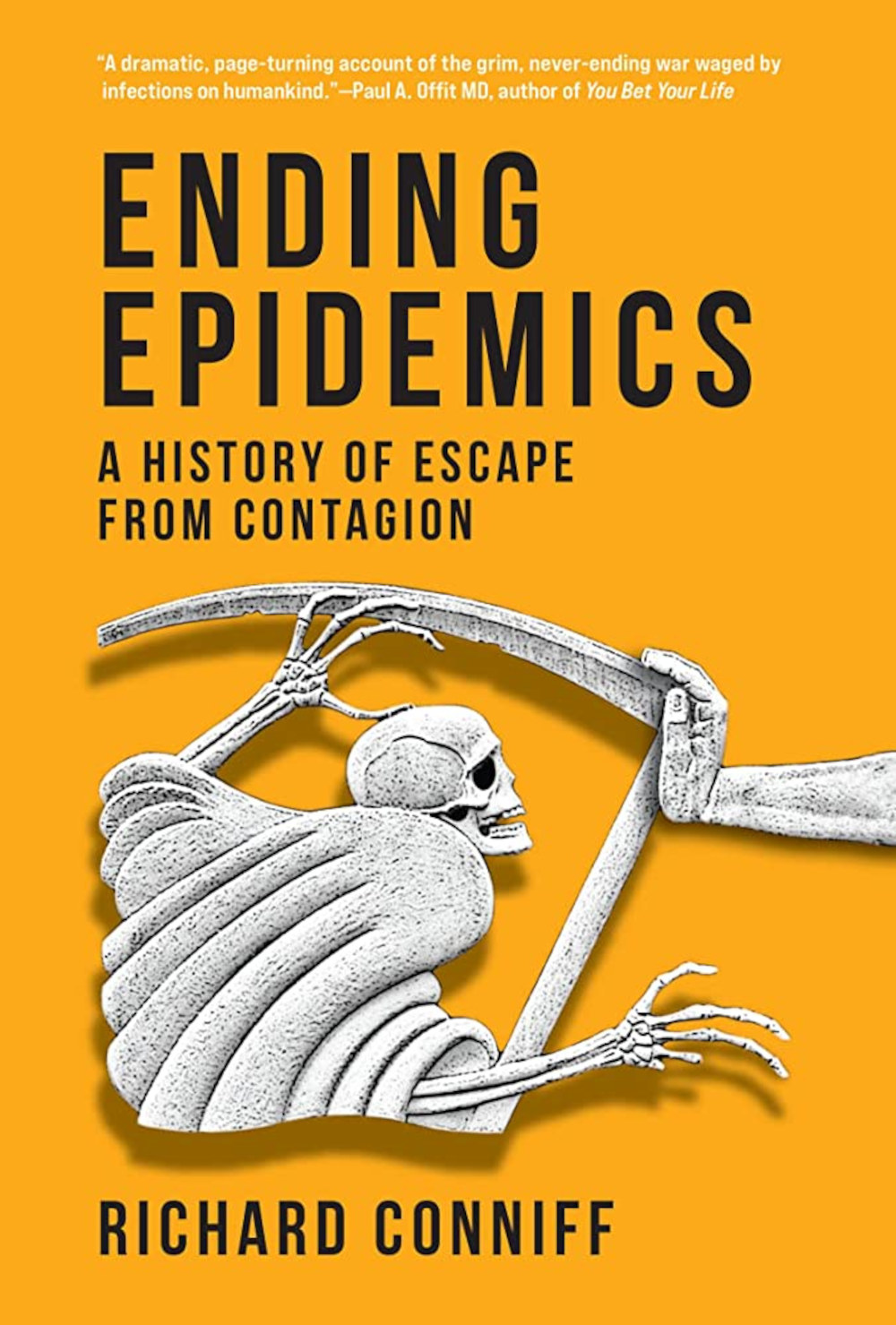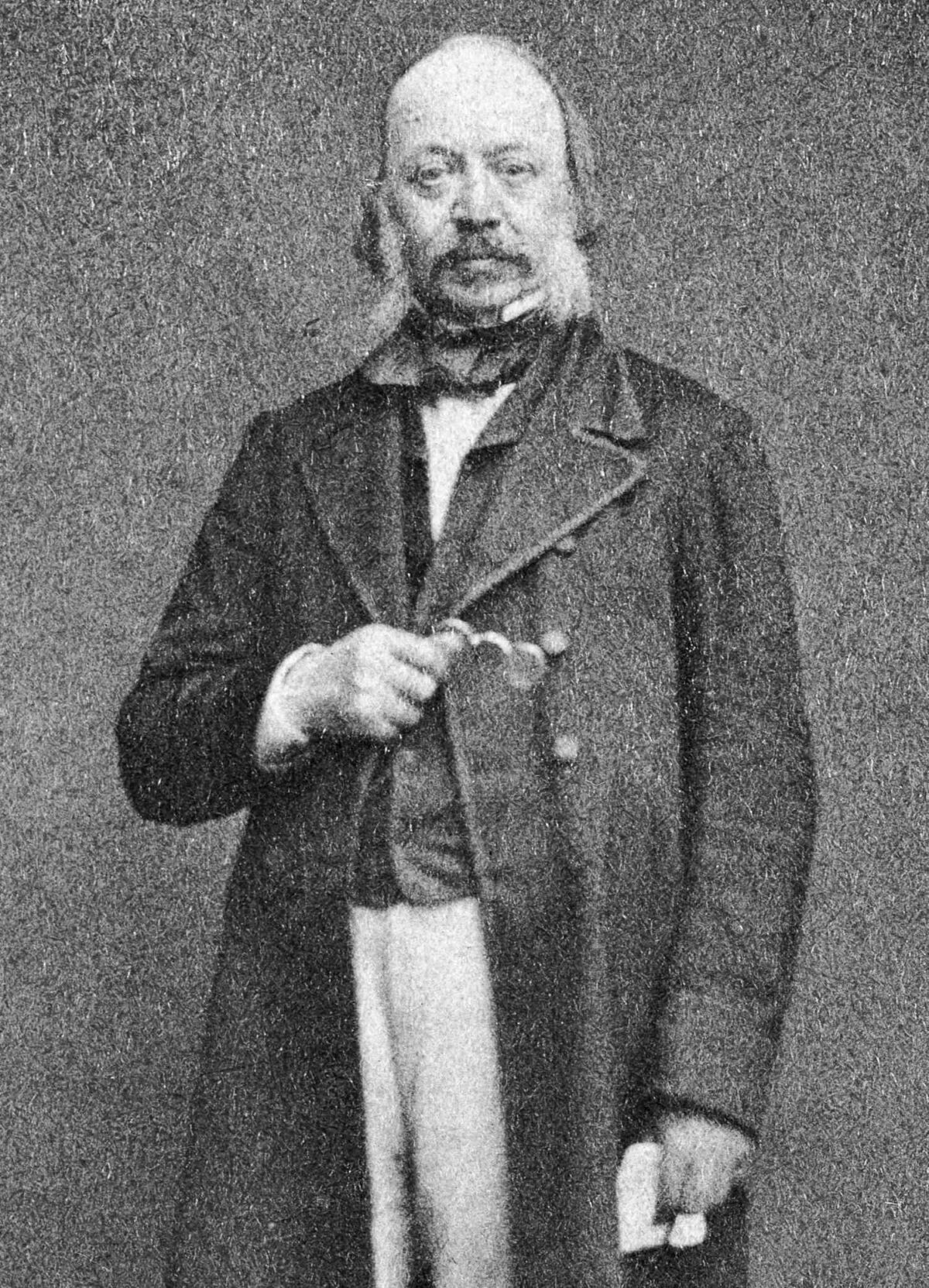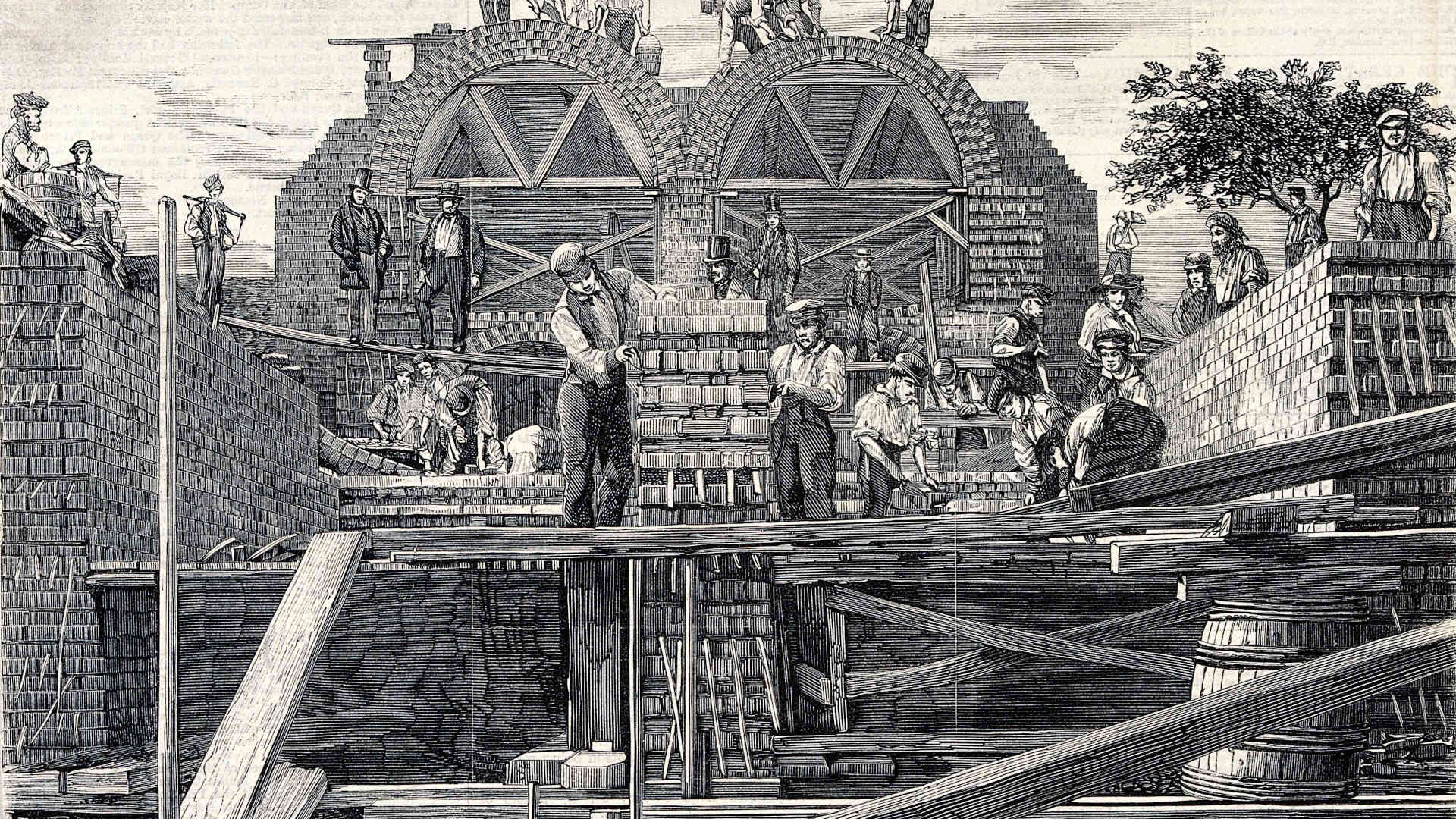It’s almost impossible now, thank God, to imagine the squalor of London and other supposedly civilized cities in the first half of the 19th century. As the rural poor moved to jobs in the factories of the Industrial Revolution, they overwhelmed the available housing and the adjacent, untended, and often uncovered, cesspools. Entire families commonly huddled together in single rooms, even in windowless basements. Overflowing sewage at times made entire cities feel as if adrift on a sea of human waste.

The accompanying article is excerpted and adapted from “Ending Epidemics: A History of Escape from Contagion” (The MIT Press, 376 pages).
The result was a second revolution, for urban sanitary reform, and it succeeded largely through the outsize influence of one peculiar man. Edwin Chadwick, now mostly forgotten, was a barrister, journalist, and social reformer. From the early 1830s onward, Chadwick campaigned for the British government to intervene in matters of public health and welfare. He promoted essential urban services, including public water supply and sewerage, street cleaning, and garbage removal. Chadwick’s work transformed the character and well-being of cities not just in Britain but, by example, worldwide. Along the way, he helped to establish the basis for the modern liberal state. “Few men have done so much for their fellow-countrymen as Edwin Chadwick,” biographer R.A. Lewis wrote, “and received in return so little thanks.”
This uncelebrated status is no doubt due both to the lowliness of his chief subject — the disposal of human waste — and to Chadwick’s difficult personality. A sanitarian who was a friend described him in the heroic mode: “firm-set massive build,” “resolute expression,” “nose aquiline,” and “the head altogether large, and to the phrenologist finely developed.”
But photographs from the period show a tall, round-faced figure, in moustache and muttonchops, hair smeared in hanks across his balding scalp, peering out from heavy-lidded eyes with something like disdain. Chadwick made a reputation for prodigious energy, and for his command of the facts of any issue he studied. But he was also humorless and uncompromising toward those who disagreed with him. He made little effort to hide his contempt for aristocratic domination or for foot-dragging by corrupt or indifferent politicians.
He was also a bore, “a really outstanding specimen of bore in an age when the species flourished,” according to the otherwise admiring biography by Lewis. “Mr. Chadwick is not an orator,” a friend acknowledged. “When he first gets up to speak without book he looks an orator, but a few moments dispel the illusion.”
In addition to these disadvantages, Chadwick made his first unfortunate public reputation working for a royal commission to modernize the system of relief for the poor. The resulting Poor Law Amendment Act of 1834, which was largely shaped by Chadwick, ended payments to the able-bodied poor. It also established the notorious workhouse system, where those who continued to receive aid were required to take up residence in prison-like conditions, with children typically separated from their parents. Charles Dickens wrote “Oliver Twist” to expose this system’s cruelties.
It made Chadwick one of the most hated men in 19th-century Britain. The poor hated him not just for the Poor Law but for a subsequent law requiring civil registration of births, deaths, and marriages. They called it being “Chadwicked.” The rich and powerful hated him for threatening their preferred laissez-faire system with the shadow of centralized government authority.
But his work on the Poor Law also exposed Chadwick to the vulnerability of the urban poor to disease. In 1838, he managed an investigation into the link between public health and pauperism in London. The resulting report caused a sensation for its depiction of the unsavory character of the water supplied by private companies. The Poor Law Commissioners then assigned Chadwick to conduct a similar investigation into the sanitary conditions of the laboring classes nationwide. They provided no funding.
Chadwick undertook a prodigious correspondence with doctors and Poor Law officials across the country. His passion for gathering evidence with his own eyes also made him a determined explorer into British slums, recording how the poor lived and died. In the process, he contracted a disease, probably typhoid, which nearly killed him. His report presented such a dire and unsparing picture of a national public health emergency that his timorous employers declined to put their names on it.
Thus, one of the most important works in the history of public health carried only Edwin Chadwick’s name when it appeared in 1842. The “Sanitary Report” — short for “Report on the Sanitary Condition of the Labouring Population of Great Britain” — was an odd publication to come from the government’s own Stationery Office, “a masterpiece of protest literature,” in the words of one historian, and it sold more than 100,000 copies.
Chadwick led readers deep into the squalor they had previously passed by with eyes and noses averted. In the narrow lanes and courtyards of a fever-ridden Glasgow neighborhood, he described open dung heaps piled high with all the “filth which the swarm of wretched inhabitants could give.” In London, there were cellars three feet deep in human excrement from overflowing cesspools, and houses in which “every article of food and drink must be covered,” lest swarms of houseflies immediately attack it and render it unfit for use “from the strong taste of the dunghill left by the flies.”

Edwin Chadwick authored the “Report on the Sanitary Condition of the Labouring Population of Great Britain” in 1842. In the words of one historian, it was “a masterpiece of protest literature.”
Visual: Wellcome Collection
The Sanitary Report’s angry rhetorical flourishes were calculated to startle the public out of its complacency. Chadwick also made shrewd use of medical statistics, a science then in its crude early stages. He compared the decreasing mortality in one East Anglia town that installed sewers with the rising death rate in a similar town nearby that continued to rely on open cesspools. Even more effective was a section with tables and maps showing the variation in death rates in different social classes within the same communities. In Bethnal Green, in London’s East End, the average age of death for “gentlemen and persons engaged in professions, and their families” was 45, but for tradesmen it was 26, and for “mechanics, servants, and labourers,” just 16.
Chadwick’s neighborhood-by-neighborhood and street-by-street comparisons foreshadowed the modern environmental justice movement. And he was plainly moved to moral outrage by the complacency with which the self-described better classes tolerated and even tacitly applauded the endless dying. A common view held that a high death rate among the poor benefited society by providing a Malthusian check on population. To the contrary, Chadwick recounted a visit to a crowded neighborhood notorious for its high mortality rate. “Why, the undertaker is never absent from this place,” he remarked to a local woman. She looked out over a courtyard full of underfed children and replied, “No, nor the midwife either.” Chadwick wrote “that the ravages of epidemics and other diseases do not diminish but tend to increase the pressure of population.”
The visceral horror of Chadwick’s reports took hold in the public mind. It aroused in politicians the need to be seen to be doing something. A royal commission soon followed, chaired by the Duke of Buccleuch. He turned over much of the work to Chadwick, the acknowledged expert. But all 13 eminent commissioners signed the two-part “State of Large Towns and Populous Districts” report, published in 1844 and 1845. It provided a remarkably comprehensive program for reforming towns and cities to improve the health of their residents.
The recommendations included provision of a constant supply of water to all homes and businesses, together with a system of sewers and drainage to carry away wastes, all under the direction of a single administrative body for each locality. Local governments would have power over the removal of rubbish; widening, paving, and cleaning of streets and pedestrian walkways; the design, construction, and ventilation of buildings; and the appointment of a medical officer to inspect all such matters of public health.
The report also recommended a way for local property owners to pay for these improvements without bankrupting themselves, by amortizing the costs over years or even decades. It also advocated for a national authority to inspect and supervise sanitary improvements. This had always been Chadwick’s ambition, given his faith in the value of a centralized civil service, aloof from petty local interests.
It took another three years of political infighting to win approval of the Public Health Act of 1848, which established a weakened version of the central oversight body Chadwick had imagined. The law endowed all communities with a population of 5,000 or more the exclusive power within their borders to provide water, sewerage, and street cleaning. The General Board of Health could, however, intervene and take over these responsibilities if the death rate was excessive, or if 10 percent of local ratepayers petitioned for intervention.
By hard lobbying, Chadwick won appointment as the only salaried commissioner of the three assigned to run the General Board of Health. And he pushed his new authority to the limit. The reforms Chadwick was advocating were daunting in their scope for local officials and engineers who had never imagined water supply and sewer systems planned and built out across an entire town or city, much less across a natural topographic drainage.
Then, as now, they resented outside interference and were capable of saying almost anything to defeat it. In 1846, a delegation questioned the Lord Mayor of London about the approaching threat of cholera. He assured his interrogators that “there could be no sanitary improvement effected in the City of London.” It was, he said, already “perfect.” The cholera epidemic of 1848-1849 suggested otherwise, killing more than 14,000 London residents.
In the General Board of Health’s first five years of work under Chadwick, drainage surveys — the first step toward a proper sewer system — were completed or in progress in 126 towns. Thirty-one municipalities had already finished their plans for water supply and drainage and had received approval from the board to seek the necessary financing. In some cases, work had begun. This no doubt seemed like a slow start to the notoriously impatient Chadwick. But it was still a novelty for any government to do anything at all about public health — much less do it at the mandatory expense of private property owners. The willingness of towns to go along was a measure of just how profoundly the conditions revealed by Chadwick’s Sanitary Report had entered the public mind.
Most municipalities appeared to be satisfied with their new water and sewerage systems, which made cities livable. The General Board of Health reported in 1854 that replacing cesspools with sewer pipelines in London’s prosperous Lambeth Square had caused the annual death rate to fall from 30 to 13 per 1,000. Sanitary improvements had also halved the death rate in certain unnamed working-class areas. The board was no doubt cherry-picking its data. But it projected that the same improvements would prevent 25,000 needless deaths per year if applied across London, and 170,000 across England and Wales. The average age at death would climb from 29 to about 48.
Unfortunately, Chadwick’s career as an executive was destined to be brief. He had been making bitter enemies since his Poor Law days, and too few friends. He had criticized physicians for dithering about the true cause of disease and promoting bogus cures. He had implied that civil engineers who disagreed with him were incompetent or corrupt. He had fought with private water companies for poisoning their customers in pursuit of profit, and with shopkeepers and small businessmen for being fixated on keeping down their property taxes, even as the cost in human lives became more evident. Being adamantly in the right didn’t necessarily help. Nor did his refusal to acknowledge when he was wrong.
In September 1849, the prime minister ousted Chadwick from a secondary position at the Metropolitan Commission of Sewers. Failing to heed the warning, Chadwick kept at his habitual practice of “blowing sparks into flames,” as a colleague put it. His opposition finally became a bonfire, and in 1854, Chadwick resigned from the General Board of Health, on the pretext of a physical breakdown. He would live another 36 years, and his influence on sanitary reform would spread to cities worldwide. But it was the end of Chadwick’s career as a public servant.
The London newspaper The Times rejoiced, with the sort of foolish bravado still sometimes seen in modern epidemics: “We prefer to take our chance of cholera and the rest than be bullied into health.”
Richard Conniff is a National Magazine Award-winning writer whose work has appeared in Smithsonian, The New York Times, The Atlantic, and National Geographic, among other publications. His books include “The Species Seekers: Heroes, Fools, and the Mad Pursuit of Life on Earth,” and “House of Lost Worlds: Dinosaurs, Dynasties, and the Story of Life on Earth.” His new book “Ending Epidemics: A History of Escape from Contagion” is available now.











Comments are automatically closed one year after article publication. Archived comments are below.
Richard Conniff has managed to turn an unappealing subject with a disagreeable hero into a very interesting read. Nicely done. Thanks for the excerpt.